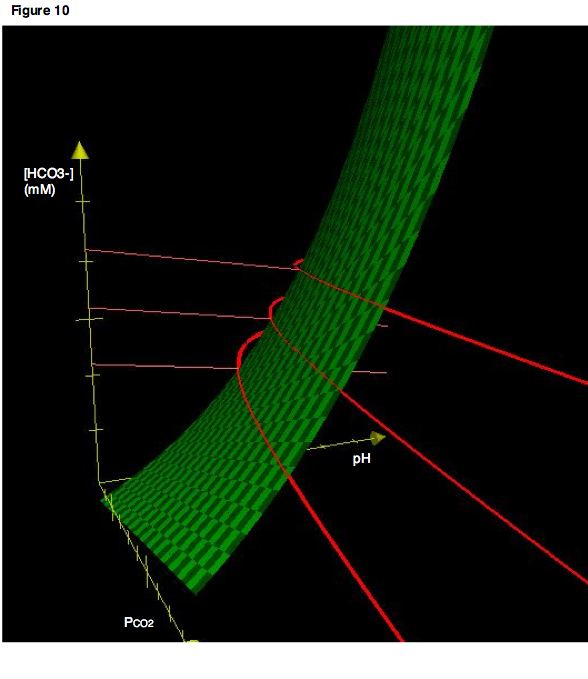MeSH D001784 | MedlinePlus 003855 | |
 | ||
An arterial blood gas (ABG) test is a blood gas test of blood from an artery; it is thus a blood test that measures the amounts of certain gases (such as oxygen and carbon dioxide) dissolved in arterial blood. An ABG test involves puncturing an artery with a thin needle and syringe and drawing a small volume of blood. The most common puncture site is the radial artery at the wrist, but sometimes the femoral artery in the groin or other sites are used. The blood can also be drawn from an arterial catheter. An ABG test measures the blood gas tension values of arterial oxygen tension (Pa2), arterial carbon dioxide tension (Pa2), and acidity (pH). In addition, arterial oxygen saturation (Sa2) can be determined. Such information is vital when caring for patients with critical illness or respiratory disease. Therefore, the ABG test is one of the most common tests performed on patients in intensive care units (ICUs). In other levels of care, pulse oximetry plus transcutaneous carbon dioxide measurement is an alternative method of obtaining similar information less invasively.
Contents
The test is used to determine the pH of the blood, the partial pressure of carbon dioxide and oxygen, and the bicarbonate level. Many blood gas analyzers will also report concentrations of lactate, hemoglobin, several electrolytes, oxyhemoglobin, carboxyhemoglobin and methemoglobin. ABG testing is mainly used in pulmonology and critical care medicine to determine gas exchange which reflect gas exchange across the alveolar-capillary membrane. ABG testing also has a variety of applications in other areas of medicine. Combinations of disorders can be complex and difficult to interpret, so calculators, nomograms, and rules of thumb are commonly used.
Sampling and analysis
Arterial blood for blood gas analysis is usually drawn by a respiratory therapist and sometimes a phlebotomist, nurse, paramedic or doctor. Blood is most commonly drawn from the radial artery because it is easily accessible, can be compressed to control bleeding, and has less risk for occlusion. The selection of which radial artery to draw from is based on the outcome of an Allen's test. The brachial artery (or less often, the femoral artery) is also used, especially during emergency situations or with children. Blood can also be taken from an arterial catheter already placed in one of these arteries.
There are plastic and glass syringes used for blood gas samples. Most syringes come pre-packaged and contain a small amount of heparin, to prevent coagulation. Other syringes may need to be heparinised, by drawing up a small amount of liquid heparin and squirting it out again to remove air bubbles. Once the sample is obtained, care is taken to eliminate visible gas bubbles, as these bubbles can dissolve into the sample and cause inaccurate results. The sealed syringe is taken to a blood gas analyzer. If a plastic blood gas syringe is used, the sample should be transported and kept at room temperature and analyzed within 30 min. If prolonged time delays are expected (i.e., greater than 30 min) prior to analysis, the sample should be drawn in a glass syringe and immediately placed on ice. Standard blood tests can also be performed on arterial blood, such as measuring glucose, lactate, hemoglobins, dys-haemoglobins, bilirubin and electrolytes.
Calculations
The machine used for analysis aspirates this blood from the syringe and measures the pH and the partial pressures of oxygen and carbon dioxide. The bicarbonate concentration is also calculated. These results are usually available for interpretation within five minutes.
Two methods have been used in medicine in the management of blood gases of patients in hypothermia: pH-stat method and alpha-stat method. Recent studies suggest that the α-stat method is superior.
Both the pH-stat and alpha-stat strategies have theoretical disadvantages. α-stat method is the method of choice for optimal myocardial function. The pH-stat method may result in loss of autoregulation in the brain (coupling of the cerebral blood flow with the metabolic rate in the brain). By increasing the cerebral blood flow beyond the metabolic requirements, the pH-stat method may lead to cerebral microembolisation and intracranial hypertension.
Helpful guidelines
- A 1 mmHg change in PaCO2 above or below 40 mmHg results in 0.008 unit change in pH in the opposite direction.
- The PaCO2 will decrease by about 1 mmHg for every 1 mEq/L reduction in [HCO3−] below 24 mEq/L
- A change in [HCO3−] of 10 mEq/L will result in a change in pH of approximately 0.15 pH units in the same direction.
